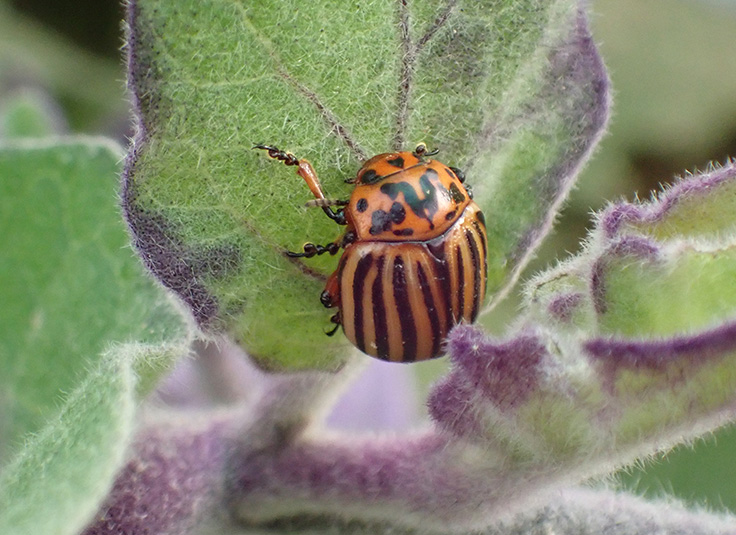Colorado Potato Beetles
Latin name: Leptinotarsa decemlineata (photo coming)
Size: 3/8-inch long
Color(s): Alternating black and gold stripes, reddish-orange head. Larvae are red with black spots. Eggs are tubular and yellow or orange.
Life Cycle: The adult Colorado potato beetles overwinter in the soil, emerge in the spring, lay tubular orange eggs on the leaf undersides. The eggs hatch into plump, round larvae that have reddish-bodies and black spots on their sides. After voraciously eating the plants’ leaves, they later pupate in the soil and emerge as adults about 2 weeks later.
Signs of their activity: Chewed leaves
Typically seen on: Members of the Nightshade family (mainly on potatoes, but also possible on tomatoes, eggplants, peppers and tomatillos)
Controls: Monitor your susceptible crops regularly, especially by looking on the undersides of the leaves for those orange eggs — and squash them, if seen. Also watch for the larvae and adult beetles and hand-pick whenever you see them. If necessary, spray plants with Bt (Bacillus thuringiensis tenebrionis) — look for packages that specifically target the Colorado potato beetle larvae. Since members of the Nightshade family are more productive through pollination, covering the crops for the season is not an option.
Natural predators: Assassin bugs, damsel bugs, ground beetles, lacewings, ladybugs, parasitic wasps, praying mantids, robber flies, spiders.
Back to Organic Pest Control

